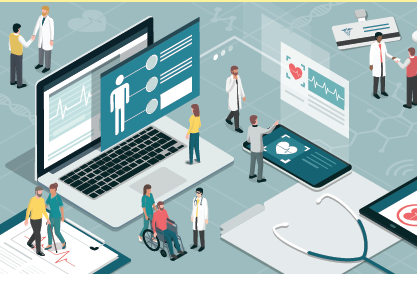HEALTHCARE
a) ........................................................................................................... .
b) ........................................................................................................... ?
The present healthcare system was built in the middle of the last century. Although there’s been tremendous progress on medical diagnosis and treatments, care delivery hasn’t structurally changed much. At the moment, if someone doesn’t feel well, they may see their doctor, get an appointment with a hospital specialist, have tests, have those results looked at and then receive the necessary treatment. This can take a long time.
c) ........................................................................................................... ?
We have to start looking at healthcare from the patient’s point of view. The aim is to proactively keep them well rather than react when they become ill. They can have devices that will constantly measure their heart rate, blood pressure, breathing, weight and activity levels.
This data can be taken from their device or smartphone app and processed through algorithms that show how their health is evolving. Patterns created can show that intervention is needed. Both the person and the remotecare team can monitor their health. Patients can be engaged through social networks, competitions and games. ‘Care hubs’ can act like a flight control centre, looking at the health of their population based on a combination of streaming information from the patients and the health records they keep. These hubs could help patients whose data indicates the need of support, either by a two-way video consultation or a visit.
d) ........................................................................................................... ?
The vision I’m foreseeing is one where, for instance, a doctor uses their tablet ultrasound to make a video of a patient’s beating heart. When irregularities are noted, the doctor shares this immediately with a cardiologist to diagnose the patient and set up a care plan. There’s no need to make an appointment in weeks or months – the issue can be dealt with in real time. This is what we have become accustomed to when booking flights, doing our finances or shopping online. It’s a world where someone with a chronic condition has all their vital data reached by their care team who will probably know before the patient. Patients and specialists don’t need to be in the same space at the same time.
A network of connected care means several experts can look at the case simultaneously. This would enable the early diagnosis of health issues by constant monitoring before they become more serious.
This will be common practice within ten years. It will be hard changing a system that is hard-wired to be more reactive, but that’s how it will be in the future.
Adapted from the Telegraph website

